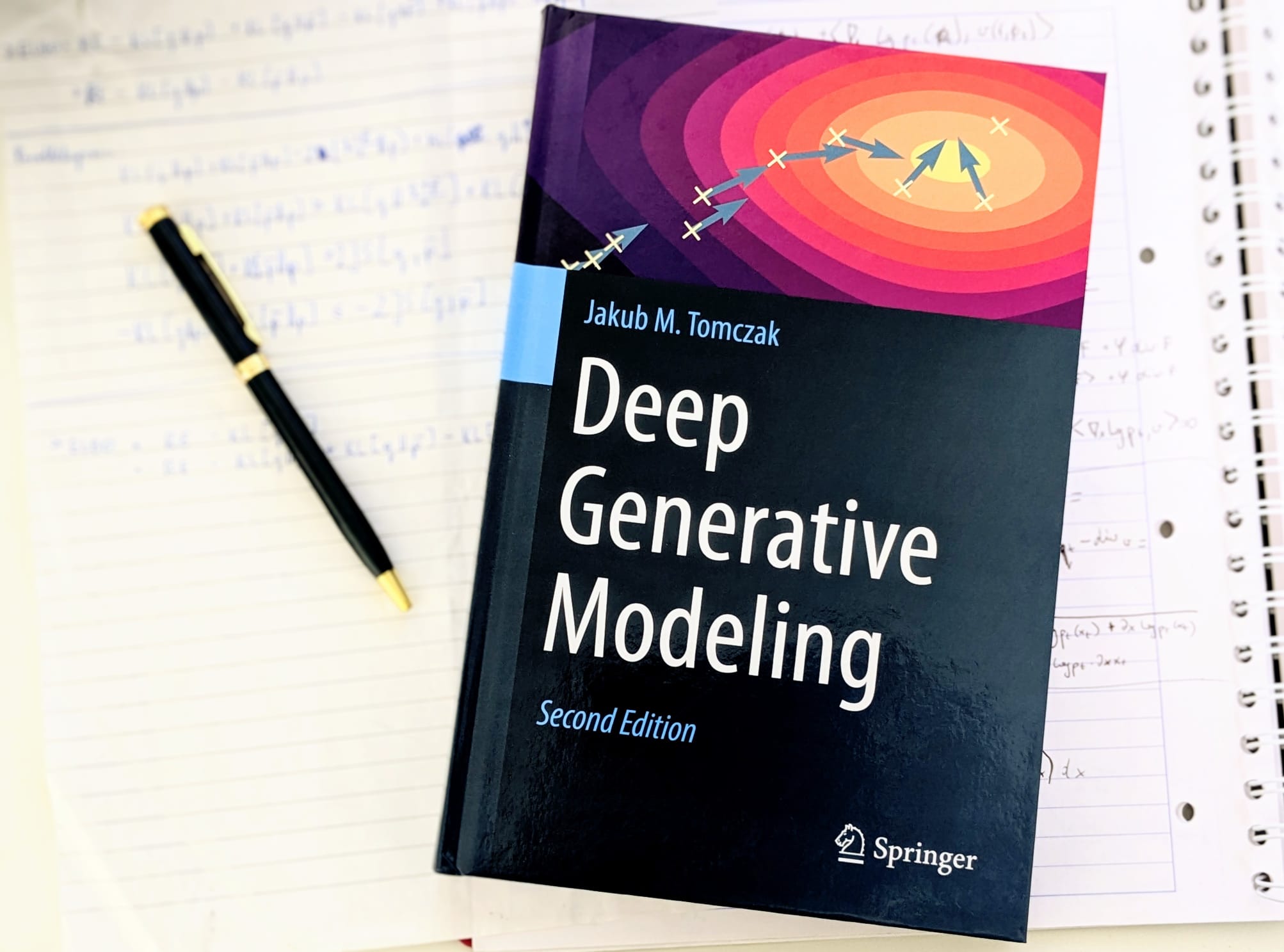| Title: Deep Generative Modeling Author: Jakub M. Tomczak DOI: https://doi.org/10.1007/978-3-031-64087-2 Publisher: Springer Cham Code: github |
 |
About the book¶
This first comprehensive book on models behind Generative AI has been thoroughly revised to cover all major classes of deep generative models: mixture models, Probabilistic Circuits, Autoregressive Models, Flow-based Models, Latent Variable Models, GANs, Hybrid Models, Score-based Generative Models, Energy-based Models, and Large Language Models. In addition, Generative AI Systems are discussed, demonstrating how deep generative models can be used for neural compression, among others.
Deep Generative Modeling is designed to appeal to curious students, engineers, and researchers with a modest mathematical background in undergraduate calculus, linear algebra, probability theory, and the basics of machine learning, deep learning, and programming in Python and PyTorch (or other deep learning libraries). It should find interest among students and researchers from a variety of backgrounds, including computer science, engineering, data science, physics, and bioinformatics who wish to get familiar with deep generative modeling.
In order to engage with a reader, the book introduces fundamental concepts with specific examples and code snippets. The full code accompanying the book is available on the author's GitHub site: github
The ultimate aim of the book is to outline the most important techniques in deep generative modeling and, eventually, enable readers to formulate new models and implement them.
Table of contents¶
- Front matter
- Foreword by Prof. Max Welling
- Preface
- Chapters
- 1. Why Deep Generative Modeling? (Updated)
- 2. Probabilistic Modeling: From Mixture Models to Probabilistic Circuits (NEW!)
- 3. Autoregressive Models (Updated)
- 4. Flow-Based Models
- 5. Latent Variable Models (Updated)
- 6. Hybrid Modeling
- 7. Energy-Based Models
- 8. Generative Adversarial Networks
- 9. Score-Generative Models (NEW!)
- 10. Deep Generative Modeling for Neural Compression
- 11. From Large Language Models to Generative AI Systems (NEW!)
- Appendix:
- A. Useful Facts from Algebra and Calculus
- B. Useful Facts from Probability Theory and Statistics
- Code accompanying the book:
- Github